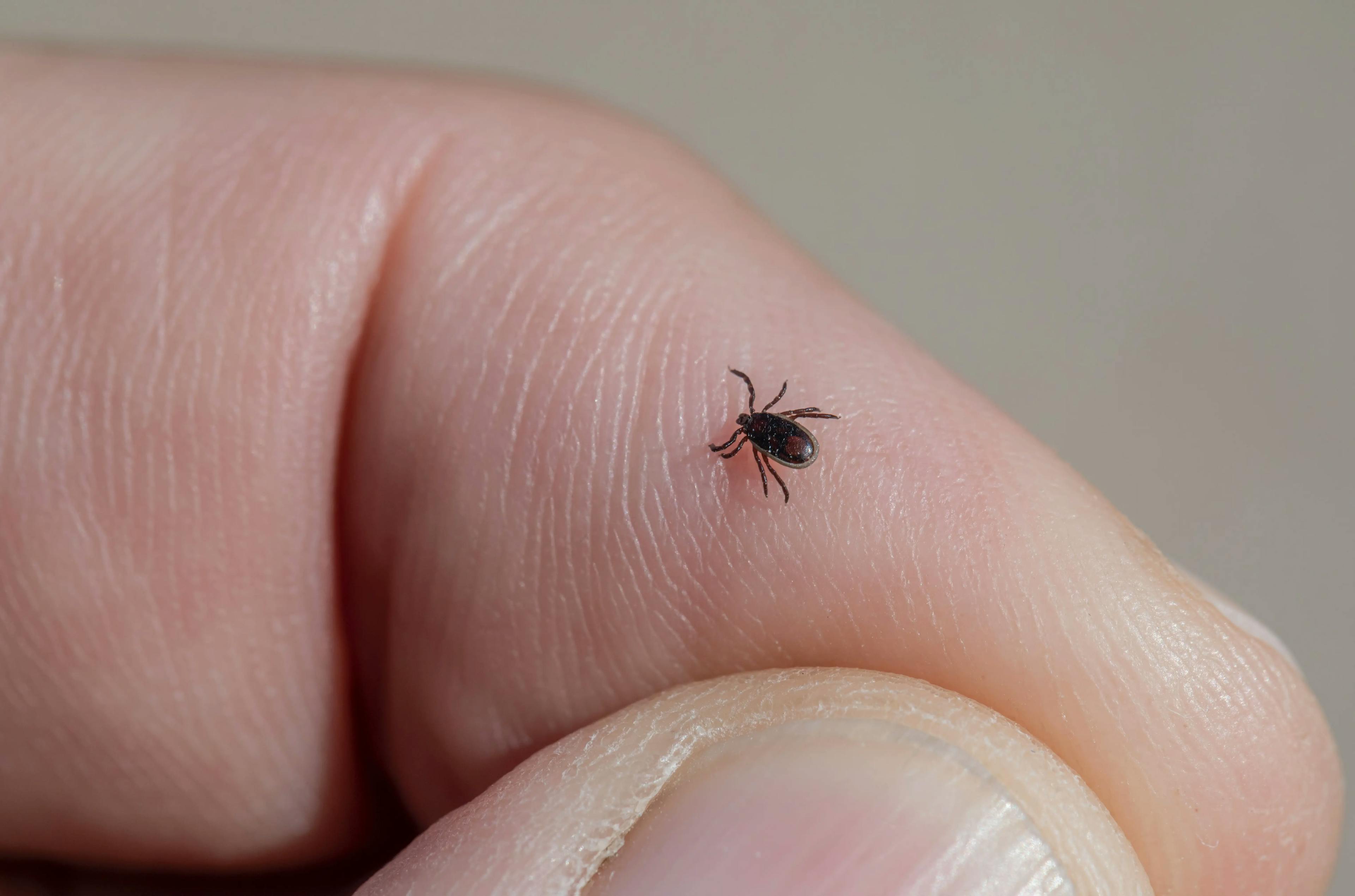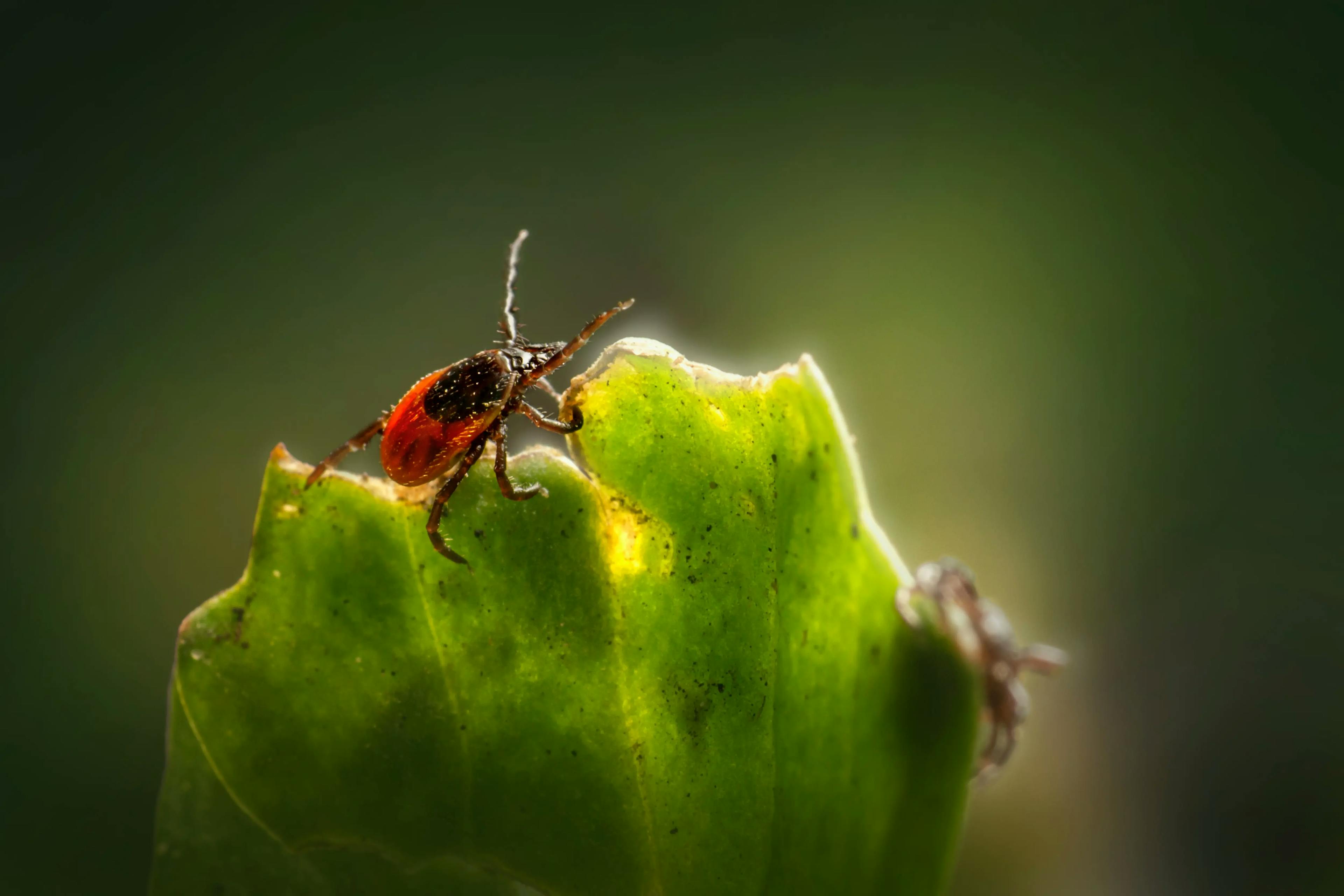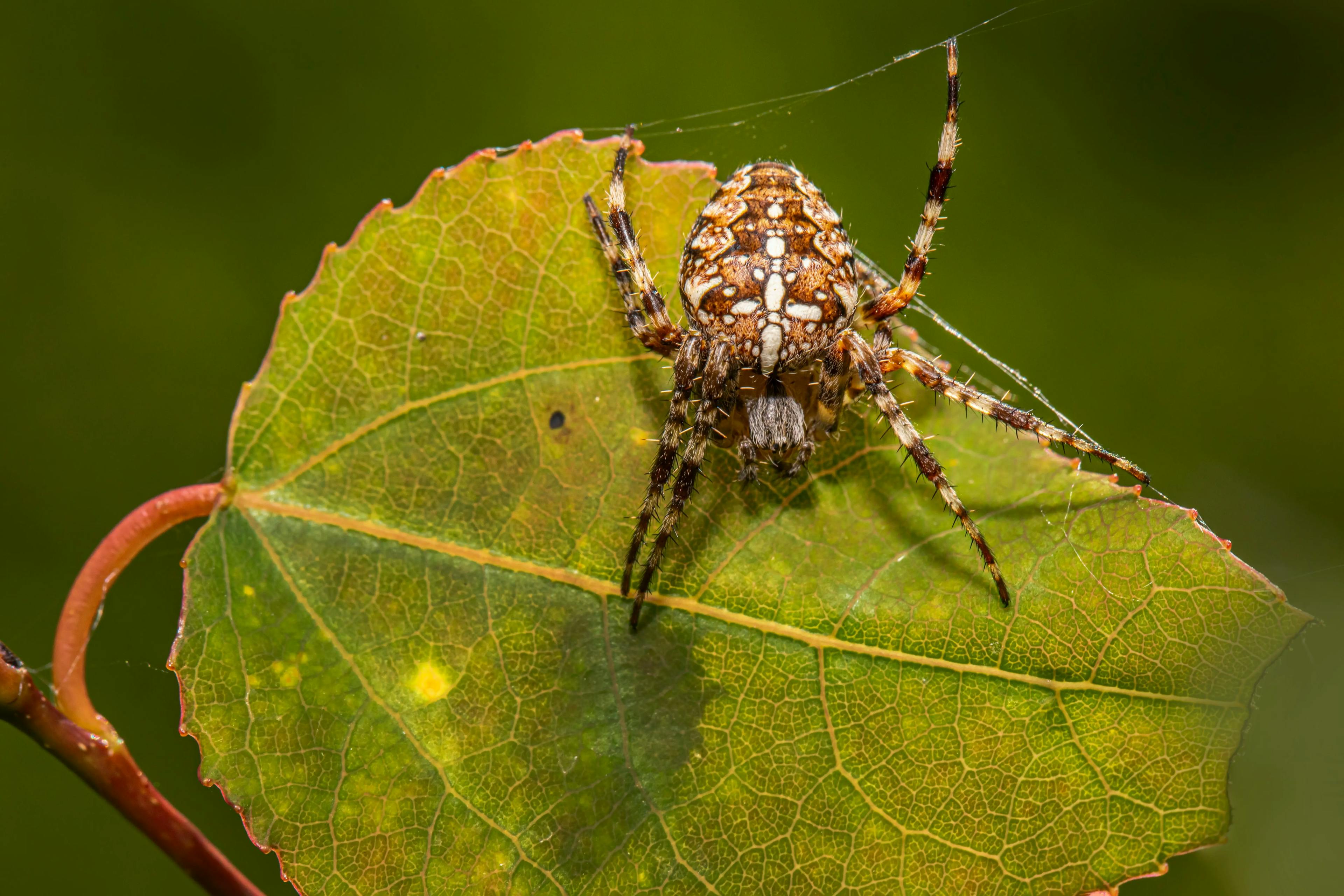Tick season is open. What to do and how to protect yourself

Ticks are very active in spring. Everyone's heard of them, but not everyone's had a tick bite — and that is a good thing. It is impossible to overestimate the danger that ticks pose. Not only for pets, but also for humans, they can cause serious health problems.
What can tick bites cause?
A tick is a tiny insect, no more than 2–3 millimetres in size. It is extremely difficult to spot, even realistically from human height. Ticks are also expert at camouflaging themselves in grass, flowers and bushes, and their small size makes them easy to hitch a ride on.
In addition to their parasitic nature, ticks are vectors for an impressive list of diseases. For dogs and cats, the most dangerous consequence is piroplasmosis, which can easily kill your pet friend if not caught in time and left untreated.

Human diseases are less deadly. Rabies is not transmitted by ticks, but the others can cause irreparable damage to the body. They can also be fatal. They should never be taken lightly.
Diseases transmitted by ticks
The list is impressive, so let's have a look at the most dangerous diseases that require immediate action.
Lyme disease
It has nothing to do with the sour green fruit so often used in cocktails. The disease is caused by the bacteria Borrelia burgdorferi sensu lato. The first symptoms usually appear after 2 weeks, but can occur within 2–30 days.
A red spot with a pale centre usually appears at the site of the bite. This will grow for a few days. This is accompanied by fever, chills, muscle and joint pain. It can easily be mistaken for a cold without blood tests and a thorough physical examination.
The condition can become chronic if left untreated.
Ixodidae lyme borreliosis
It's related to the previous infection. The difference is that there are no spots on the body. It is characterised by a sudden rise in temperature to 39-40° — a dangerous condition. The most dangerous thing is that the patient returns to normal after 7–10 days.
Usually this behaviour is perceived as «getting rid of a cold» or «I must have overheated, so I'm sick». However, especially if the patient has not taken antibiotics, which are no longer available without a prescription, the symptoms may return after a few days.
The worst part is that this type of Lyme disease can lead to complications in the heart, the kidneys, the lungs and even the brain. The situation can become critical if any of these organs are weakened or suffer from chronic disease.
Encephalitis
Of course, there was no way we could avoid encephalitis. Everyone has heard of encephalitis, but not everyone has an idea of what it is or how dangerous it is.
Antibiotics won't help because encephalitis is a viral disease. To make matters worse, it may not show up immediately. It may take 30 days. The victim's temperature rises to the dangerous 40 °C. Pain begins in the muscles of the back, head and neck, and in the eyes. It also causes photophobia.
Encephalitis affects the nervous system and can lead to seizures, paralysis and coma if there is no treatment in time.
Human monocytotropic ehrlichiosis
It is a bacterial disease that affects the lymph nodes, the bone marrow, the liver and the spleen. Most importantly, there are no specific symptoms - the same headache, chills, fever, muscle and joint pains.
Fever
A wide range of fevers can be transmitted to humans by tick saliva. The list is quite long, so there is no point in describing the symptoms of each one. The most important thing to understand is that if you are bitten by a tick, you should not wait for the disease to manifest itself. You must act immediately.
What to do in case of bites
First, remove the tick. It's not easy, but it can be done. For two reasons, it is useless to wait for the tick to saturate and fall off by itself:
- ticks can swell up to ten times their original size;
- the longer the tick is on the skin, the greater the risk of transmission.
You'll need thread, a lasso or a screwdriver to get rid of the pests. The first is easy to find. The other two are more difficult to find. But they are the most effective.
The main purpose of all three tools is the grasping of the tick by the snout. Then gently and slowly twist it out of the skin without changing the direction of rotation. Be very careful not to crush the insect or tear off its head, which is firmly attached to the epithelium.
After extraction, check that the tube is still present. This is easily done by looking closely at the parasite - you will immediately see a long extension at the end of the head. If it is there, well done, if not, seek medical help.
Despite popular belief, do not burn the tick after removing it.
In this way, you will have no idea what kind of diseases it may have had. Instead, put it in a test tube. Close it tightly. Take it to the lab, so experts can find out which diseases can be treated if anything happens.
Do not put more than 5 insects or ticks from different people in the same test tube!
Remember to use some kind of antiseptic to treat the bite. Alcohol, iodine or an ordinary brilliant green antiseptic will do.
How to avoid getting bitten and what to expect
Vaccination against tick-borne encephalitis is the most effective way to protect against the disease. Luxembourg is not at risk, but Germany is. Of course, the probability of dangerous insects entering the Grand Duchy is low, but it is not zero. So a little extra precaution can't hurt.
When walking in the woods or high grass, it's always a good idea to wear suitable clothing. Your clothing should have as much coverage as possible over your exposed skin. This should include a collared shirt and high-capped boots or other suitable footwear. Tuck your trousers in and your shirt in.
Don't forget to wear a hat. This will help protect your head from the sun and also cover the parts of your body that ticks find most difficult to see.
Tick repellent is also a good idea. You should look for ones that work on ticks as well. Other insects — mosquitoes and gadflies — usually work too. But if you don't have these options, it's best to use a combination of two products.
If you are taking your pets with you, be sure to treat them beforehand. There are a range of products available, from tablets to liquid emulsions for application to the coat. Your vet will be able to help you choose the best product.
Myths about ticks
Tales about ticks resemble children's horror stories. Sometimes they make these insects seem like cunning and resourceful monsters. Of course, they are not.
A tick bite is easy to feel
Highly unlikely. You're more likely to notice that you've been bitten by mosquitoes. The tick's saliva contains a fairly strong anaesthetic that masks the presence of the parasite for a very long time, so it benefits from staying on you for as long as possible.
It's important to wear a hood or hat because ticks jump from trees.
They also have steel claws and lasers that shoot from their eyes. The tick is perfectly happy in the grass, where it has access to the hair of animals and passers-by. It doesn't need to climb trees waiting for prey.

Instead, the tick spreads its front legs upwards, as if hitch-hiking on the side of the road. In this way, it can easily latch on to any warm-blooded animal that gets close enough to it.
A sucked tick can be covered with oil or acetone
Pediculosis used to be «treated» with acetone and petrol, but this method does more harm than good.
First, the mites are incredibly hardy. They can go into hibernation for several years if the living conditions become unsuitable. They will then go on a bloody hunt again.
Secondly, not only will oil or other toxic substances not get rid of the parasite because it won't suffocate, but they will do you harm by attacking your skin and increasing the risk of spreading infection.
Only the methods described earlier in this article can remove a tick.
Only ticks with a cross on their back are dangerous
Crosses on the back are a characteristic feature of crossed spiders, hence the name. Most ticks are monochrome or covered with faded ornaments. And they are all dangerous.

Don't risk your fate and look at the backs of parasites in the hope of seeing «Congratulations, I carry encephalitis» note. It is better to see a doctor immediately.
A word of caution
It is, of course, impossible to predict the attack of a tick in advance. Therefore, you, your family and your pets should be extremely careful.
Prepare in advance for a trip or a campaign. Do not neglect the means of protection. Check for the presence of insects regularly while outdoors.





